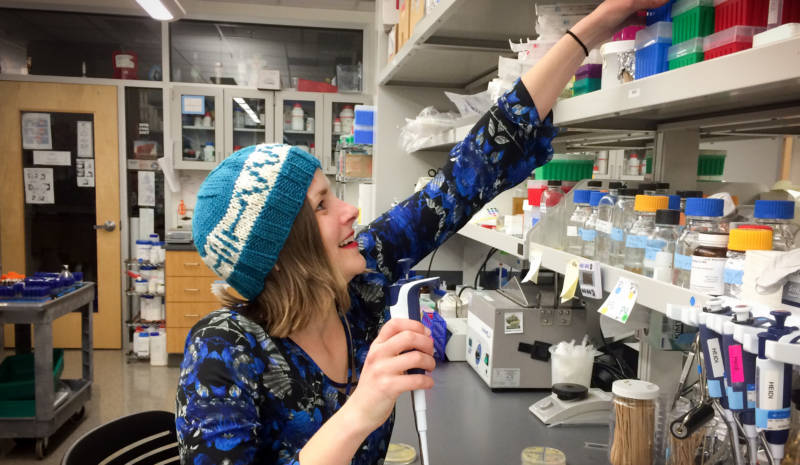Later this month, scientists will march in San Francisco and across the country to protest the Trump administration’s rejection of scientific facts and data.
The event may be marked by a unifying splash of color similar to the hot pink pussy hats worn at the Women’s March in January.
A Bay Area researcher, and avid knitter, has designed a turquoise resistor hat for scientists, and made the pattern free online.
Heidi Arjes, a microbiologist at Stanford University, never cared about politics until recently. “I’ve been very complicit to just come into lab, work really long hours and collect as much as data as I can, she says.”

Arjes remembers when things changed. She was on the phone with her parents, who live in rural Iowa, about a week after the election. She complained to her mom about the state of the country and her grievances fell on deaf ears.
